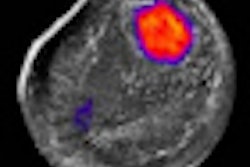Monday, November 29 | 3:10 p.m.-3:20 p.m. | SSE21-02 | Room S403A
In this scientific session, a research team from the U.S. Food and Drug Administration (FDA) will discuss how adding ultrasound and computer-aided detection (CAD) to mammograms affects reader variability.The study group sought to examine how the variability of image interpretation is affected when a mammogram is followed by the sequential addition of ultrasound and then CAD review.
Because agreement between readers is utilized to assess interobserver variability, and different agreement measures might produce different results, the researchers also were interested in comparing several widely used agreement measures, said presenter Anna Kettermann from the FDA.
In a dataset including mammograms and 3D ultrasound studies from 67 women, 10 experienced breast radiologists first provided likelihood-of-malignancy ratings and BI-RADS assessments based on the mammograms alone. Next, they gave new ratings and biopsy recommendations based on the ultrasound scans and mammograms, and finally, they provided another rating and biopsy recommendation after they viewed the CAD score.
The study team found that both observer performance and interobserver agreement improved with the addition of ultrasound and CAD.
"This raises the possibility that [CAD] could be useful in efforts to reduce interobserver variability," Kettermann told AuntMinnie.com.
In addition, reader agreement analysis was judged to be helpful for measuring consistency of image interpretation.
"We also found that different measures of agreement indicated similar trends as ultrasound and [CAD] were sequentially added to mammography," she said.
Future studies may indicate which measures, if any, may have a better potential to detect differences in reader agreement between different modalities, she said.




















